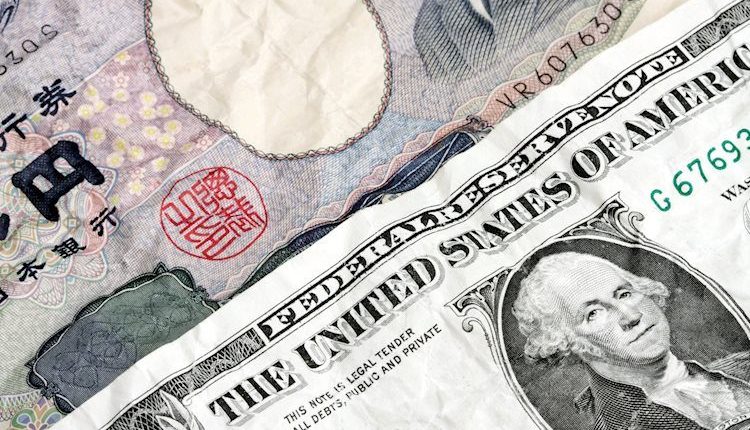- The Japanese Yen rebounds from over one-week low touched against the USD on Tuesday.
- Doubts over BoJ’s ability to hike rates might hold back the JPY bulls from placing fresh bets.
- Expectations for a less dovish Fed could underpin the USD and lend support to USD/JPY.
The Japanese Yen (JPY) stages a modest intraday bounce after touching over a one-week low against its American counterpart during the Asian session on Tuesday. A softer risk tone, concerns that US President-elect Donald Trump’s tariff plans could trigger a second wave of global trade wars, and geopolitical tensions turn out to be key factors that benefit the safe-haven JPY.
Any meaningful JPY appreciation, however, seems elusive in the wake of wavering expectations that the Bank of Japan (BoJ) will hike interest rates again in December. Furthermore, the overnight bounce in the US Treasury bond yields, from October lows, might hold back traders from placing aggressive bullish bets around the lower-yielding JPY and cap the intraday uptick.
Meanwhile, the US Dollar (USD) might look to build on the post-NFP recovery from a nearly one-month low amid bets for a less dovish Federal Reserve (Fed). This might further contribute to limiting the downside for the USD/JPY pair. Traders might also opt to wait on the sidelines and look to the US consumer inflation figures for cues about the Fed’s rate-cut path.
Japanese Yen attracts some haven flows; BoJ uncertainty might cap gains
- Bank of Japan Governor Kazuo Ueda recently said that the timing of the next rate hike was approaching. This, along with data showing that the underlying inflation in Japan remains solid, lifted bets that the BoJ will hike rates at its December 18-19 policy meeting.
- Some media reports, however, suggested the BoJ may skip a rate hike this month. Moreover, BoJ’s dovish board member Toyoaki Nakamura said that the central bank must move cautiously in raising rates, adding a layer of uncertainty and undermining the Japanese Yen.
- The US Nonfarm Payrolls (NFP) report released on Friday reaffirmed bets for a rate cut by the Federal Reserve in December. The Fed, however, could deliver a cautious message amid expectations that US President-elect Donald Trump’s policies could reignite inflationary pressures.
- The yield on the benchmark 10-year US government bond staged a modest bounce on Monday, after closing at its lowest level since October 18 last Friday. This assists the US Dollar (USD) build on the post-NFP recovery and provides a modest lift to the USD/JPY pair.
- Investors remain concerned about Trump’s impending trade tariffs and their effect on the global economic outlook. Moreover, turbulence in the Middle East increased over the weekend after Syrian rebels took control, forcing President Bashar al-Assad to flee to Russia.
- This week’s main event will be Wednesday’s release of the US Consumer Price Index for November, which should offer cues about the interest rate outlook in the US. This, in turn, should influence the currency pair ahead of the FOMC/BoJ policy meetings next week.
USD/JPY slide below the 151.00 mark could be seen as buying opportunity
From a technical perspective, any subsequent move up is more likely to confront stiff resistance and remain capped near the 151.75-152.00 confluence. The said area comprises the 38.2% Fibonacci retracement level of the recent pullback from a multi-month high touched in November and the very important 200-day Simple Moving Average (SMA). Given that oscillators on the daily chart have recovered from negative territory, a sustained move beyond the 152.00 mark should pave the way for additional gains towards the 152.70-152.75 region, or the 50% retracement level. This is followed by the 153.00 round figure, above which the USD/JPY pair could extend the momentum towards the 61.8% Fibo. level, around the 153.70 area.
On the flip side, weakness below the 151.00 mark now seems to find decent support near the 150.60 region, or the 23.6% Fibo. level resistance breakpoint. The next relevant support is pegged near the 150.00 psychological mark, below which the USD/JPY pair could weaken to the 149.50-149.45 region en route to the 149.00 mark and the monthly low, around the 148.65 area touched last week. The latter coincides with the 100-day SMA and a convincing break below will be seen as a fresh trigger for bearish traders, and set the stage for a further near-term depreciating move.
Bank of Japan FAQs
The Bank of Japan (BoJ) is the Japanese central bank, which sets monetary policy in the country. Its mandate is to issue banknotes and carry out currency and monetary control to ensure price stability, which means an inflation target of around 2%.
The Bank of Japan embarked in an ultra-loose monetary policy in 2013 in order to stimulate the economy and fuel inflation amid a low-inflationary environment. The bank’s policy is based on Quantitative and Qualitative Easing (QQE), or printing notes to buy assets such as government or corporate bonds to provide liquidity. In 2016, the bank doubled down on its strategy and further loosened policy by first introducing negative interest rates and then directly controlling the yield of its 10-year government bonds. In March 2024, the BoJ lifted interest rates, effectively retreating from the ultra-loose monetary policy stance.
The Bank’s massive stimulus caused the Yen to depreciate against its main currency peers. This process exacerbated in 2022 and 2023 due to an increasing policy divergence between the Bank of Japan and other main central banks, which opted to increase interest rates sharply to fight decades-high levels of inflation. The BoJ’s policy led to a widening differential with other currencies, dragging down the value of the Yen. This trend partly reversed in 2024, when the BoJ decided to abandon its ultra-loose policy stance.
A weaker Yen and the spike in global energy prices led to an increase in Japanese inflation, which exceeded the BoJ’s 2% target. The prospect of rising salaries in the country – a key element fuelling inflation – also contributed to the move.
Read the full article here

